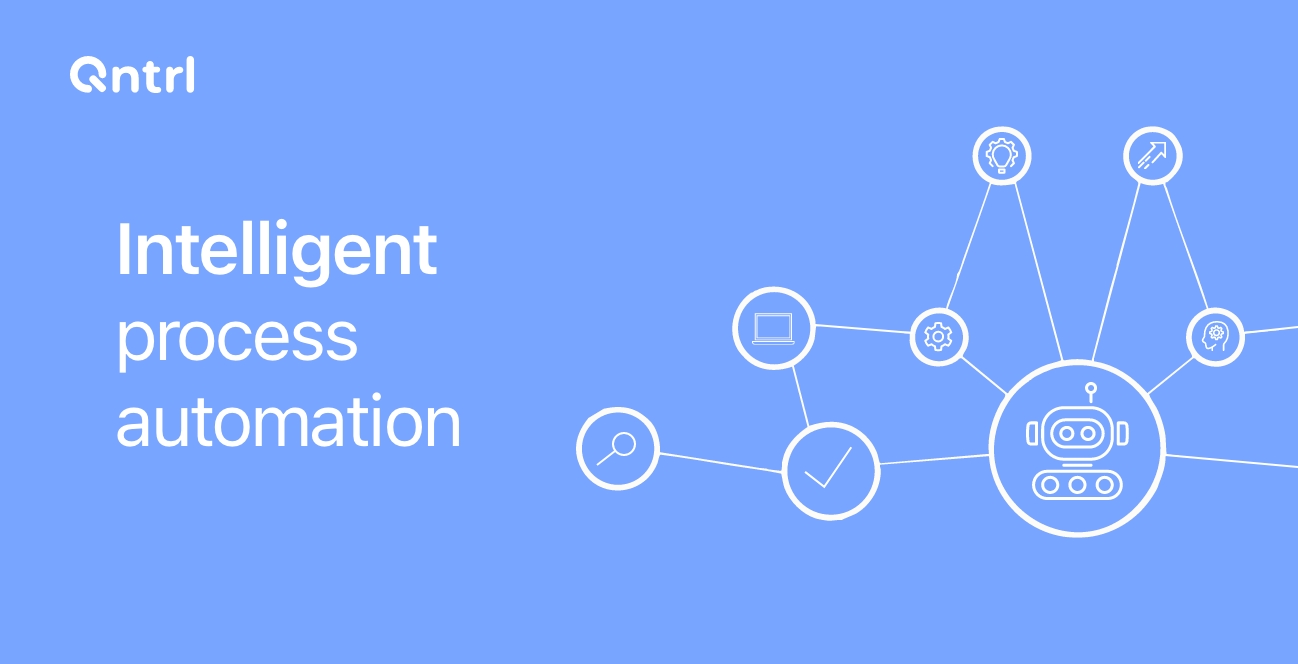Case management: Case manager roles, process, tools, and applications

The ability to handle dynamic, varying scenarios effectively requires more than just a standard workflow; it calls for a flexible and a systematically superior approach that combines technology, processes, and human decision-making—whether it’s resolving service requests, investigating claims, or addressing internal inefficiencies.
This approach is critical for managing cases often involving non-routine, unpredictable tasks requiring coordination across teams and departments. Starting from customer service issues to contract negotiations--a well-thought-out process ensures that these challenges are addressed efficiently while aligning with organizational goals.
This brings us to case management—a fairly newer methodology designed and applied to provide structure to these complex, decision-driven processes. But what exactly does it entail? Let’s delve deeper into its meaning and applications.
What exactly is case management?
Case management refers to the structured workflow to resolve issues or requests requiring investigation or additional research to reach a resolution. These cases often involve non-routine and unpredictable tasks, necessitating information gathering from diverse sources and human judgment for decision-making.
Case management encompasses the tasks involved in handling data and executing procedures necessary to resolve a specific case.
The nature of a case can vary depending on the services or products a business offers. It might be a service request that requires fulfillment, an issue that needs resolution, or an investigation that a case manager must carry out. Cases often involve elements such as contracts, claims, communications, reports, and other relevant documents.
By design, case management offers a flexible framework for managing irregular and unpredictable business processes. It facilitates the coordination of various tasks while supporting intricate decision-making requirements.
It is widely used across healthcare, legal services, and business management industries. In a business context, case management helps coordinate ad hoc tasks, process information, and streamline workflows through tools or platforms, enabling efficient resolution of complex scenarios.
Whether it's validating purchase orders, resolving delivery issues, or handling customer disputes, case management provides a clear, goal-oriented process for achieving better outcomes.
Who is a case manager, and what is their role?
A case manager is a dedicated individual who acts as the primary point of contact for the purpose of managing and closing a case. They guide the case through its entire lifecycle, from opening to closure, and guarantee that all the necessary processes are followed according to the rulebook for the case to be considered resolved.
The key responsibilities of a case manager include:
Raising and tracking tickets related to the case.
Collecting and analyzing information relevant to the issue.
Investigating the case to understand the context and details.
Collaborating with internal teams and external stakeholders to resolve issues.
Communicating updates and changes in request status.
Making informed, contextual decisions to drive swift resolutions.
Handling escalations and ensuring proper outcomes.
Utilizing knowledge-based systems to streamline workflows.
Logging, monitoring, and reporting data for future reference and insights.
Case managers play a critical role in coordinating tasks, maintaining accountability, and ensuring a seamless resolution process.
What is a case management process?
The case management process is a systematic series of steps designed to resolve cases effectively. It provides a structured yet flexible workflow for addressing complex, non-routine, or ad hoc issues across industries.
This process typically involves:
Identifying and raising the case.
Gathering information and context related to the issue.
Coordinating tasks and responsibilities among stakeholders.
Leveraging tools or systems to manage workflows efficiently.
Utilizing human judgment for decision-making in unpredictable scenarios.
Because the case management process handles tasks that vary in nature, it is considered a "long-tail process," adaptable to the unique needs of each case. Combining structured workflows with the flexibility to adjust mid-process ensures effective outcomes in dynamic and complex situations.
Case management workflow – How does it work?
Case management workflows combine diverse tools and interfaces under a user-friendly platform to manage unpredictable, information-centric tasks. These workflows facilitate seamless logging, task delegation, scheduling, and tracking from one centralized system.
Key features of a case management workflow include:
Integrated Information Management: Provides a comprehensive view of all case-related data, reducing paperwork and the need for spreadsheets.
Dashboards for Collaboration: This enables teams to monitor progress, share updates, and collaborate efficiently, fostering faster resolution.
Dynamic Task Routing: Adapts to unpredictable events by routing tasks through appropriate channels and allowing case managers to adjust workflows dynamically.
Efficiency and Transparency: Enhances productivity, ensures transparency, and improves recordkeeping with automated audit trails and detailed reporting capabilities.
By streamlining these processes, businesses can make informed decisions, resolve complex cases faster, and provide personalized customer service, often through features like self-service portals and analytics-driven insights.
How does the case management process function?
The case management process is a robust framework designed to address and resolve complex, non-routine issues. There are seven adaptive steps that ensure flexibility in responding to sudden changes in case dynamics.
The basic steps of the case management process:
Risk evaluation:
Assign risk categories to prioritize tasks effectively and ensure that urgent issues are addressed promptly.
Planning and goal setting:
Develops a detailed action plan, specifying methods, resources, and timelines to achieve case objectives.
Screening and case intake:
Determines if a case requires case management and identifies urgency or missing information. This step eliminates unnecessary work, keeping workflows uncluttered.
Assessment and evaluation:
Collects detailed insights about the case, often involving stakeholders to ensure all relevant information is gathered systematically.
Implementation:
Executes the planned actions, coordinating with necessary teams or individuals to resolve the case effectively.
Monitoring, test, deploy, and review:
Tracks progress to ensure the solution is effective, involving follow-ups or stakeholder consultations where necessary.
Outcome evaluation:
Collects feedback, analyzes outcomes, and documents lessons learned for continuous improvement in future case management.
This structured yet flexible approach enables organizations to adapt to changing case requirements, improve efficiency, and drive better outcomes while maintaining transparency and collaboration across teams.
Where are case management applications widely used?
Case management is widely used across industries to streamline processes, improve work patterns and increase operational efficiency. Organizations use case management to cover a variety of cases, including:
Assigning and tracking tickets efficiently to ensure timely resolution and effective issue management.
Centralizing helpdesk operations to handle customer inquiries seamlessly, enabling multiple personnel to collaborate without confusion.
Managing claims processing by automating workflows for faster resolutions and generating reports for quick analysis.
Simplifying service request handling with easy access, automated alerts, and streamlined task assignments.
Enhancing customer interactions and onboarding by structuring processes to improve satisfaction, retention, and speed.
Organizing IT service desk requests, lost-and-found items, and facilities services through systematic workflows that ensure no tasks are overlooked.
Facilitating issue tracking by providing authorized personnel with instant access to bug statuses and priorities.
Streamlining recruitment processes by enabling case managers to sort and evaluate multiple candidates efficiently.
These applications highlight case management's flexibility in addressing business and system needs, helping organizations optimize their workflows and achieve better outcomes.
Best Practices for Effective Case Management
To ensure that case management is done effectively, there should be a standardized set of rules that case managers can follow. These rules should include the following basic principles that should be respected at all times, regardless of the specific case details.
Collaborative communication
Case management thrives on open collaboration between administrators, managers, clients, and service providers.
Clear communication ensures that all parties work toward a shared goal, even when not all entities are directly involved.
Effective collaboration reduces costs, improves quality, and accelerates resolution times.
Data security and privacy
Protecting sensitive information is paramount in case management.
To maintain privacy and prevent data breaches, case managers should:
Minimize unnecessary data collection.
Consistently document and audit data to maintain accuracy.
Secure sensitive information through encryption.
When applicable, anonymize data to protect privacy.
Identify and validate data sources to ensure reliability.
Lastly, continuous process improvement should be focused on to enhance efficiency over time.
Learning from past cases is key to refining your case management practices. Reflecting on feedback, outcomes, and experiences allows case managers to:
Apply new skills and insights to future cases.
Share best practices with colleagues.
Build confidence, expertise, and professional credibility.
By encouraging a culture of continuous learning, case managers help advance the growth of their organization and their own professional development.
Core Components and Benefits of Case Management Systems
A robust case management system brings together key elements that empower organizations to handle complex processes efficiently and effectively. These systems are designed to adapt to each business's unique workflows and frameworks, ensuring they meet organizational needs while bolstering support systems.
The central idea of case management is collecting and sorting information from several sources and putting it in a simple and easy-to-use interface. From a centralized perspective, knowledge workers are able to identify issues, look at relevant information, and make rational decisions, whether through automated rules or good old-fashioned critical thinking. A key feature is record keeping, where every action taken to close a case is carefully documented to ensure compliance and assist with potential audits.
The availability of case management frameworks, in their dynamic nature, improves collaboration, decision-making, and productivity. With integrated data, processes, and content management, organizations can address an issue faster, engage customers better through better insights, and improve the overall operational efficiency. In addition, these systems also provide mobility; most of them being cloud based allowing users to access tools and information from any place, which enhances productivity and adaptability.
For smaller companies, cost-effective solutions such as SaaS workflow automation tools simplify operations without the need for substantial investment in hardware or system administration. Advanced management suites that offer extensive customization, automation, and scalability are, however, relied upon by larger enterprises to manage complex and high-volume workflows.
Whether or not an organization has employees who are knowledge workers, case management systems are critical to enhancing the capacity of such workers to provide excellent service, meet their deadlines, and promote strategic growth.
In choosing a case management system, features such as multi-user and role-based access, robust security standards, case-linking capabilities, flexible configurations, and workflow scheduling ensure that teams across departments—whether IT, HR, or procurement—can seamlessly collaborate, investigate incidents, and achieve their goals effectively. This adaptability and functionality make case management a vital tool for organizations of all sizes.
Adapt to easy case management with Qntrl workflow
Modern organizations cannot do without case management. With the increasing adoption of newer and better technology across industries, business processes are shifting from analog to digital channels. Manual case management has its drawbacks, such as inefficiency and irregularity.
Most companies that still use traditional methods have low productivity and find it hard to meet the needs of a dynamic world.
Following best practices, organizations can realize many benefits from their case management efforts by providing tools to boost business productivity that enhance decision-making, improve team collaboration, accelerate issue resolution, and elevate customer service.
Qntrl is a robust platform that specializes in case management. It enables businesses to streamline workflows, gather information, conduct thorough investigations, make data-driven decisions, and achieve faster resolutions. Essentially, Qntrl serves as an integrated, intuitive interface for managing all aspects of case management with enhanced efficiency and precision.
Enjoying your reading?
Enjoy organization and visibility too!
Qntrl can help you organise, control and improve production and projects in your team.







